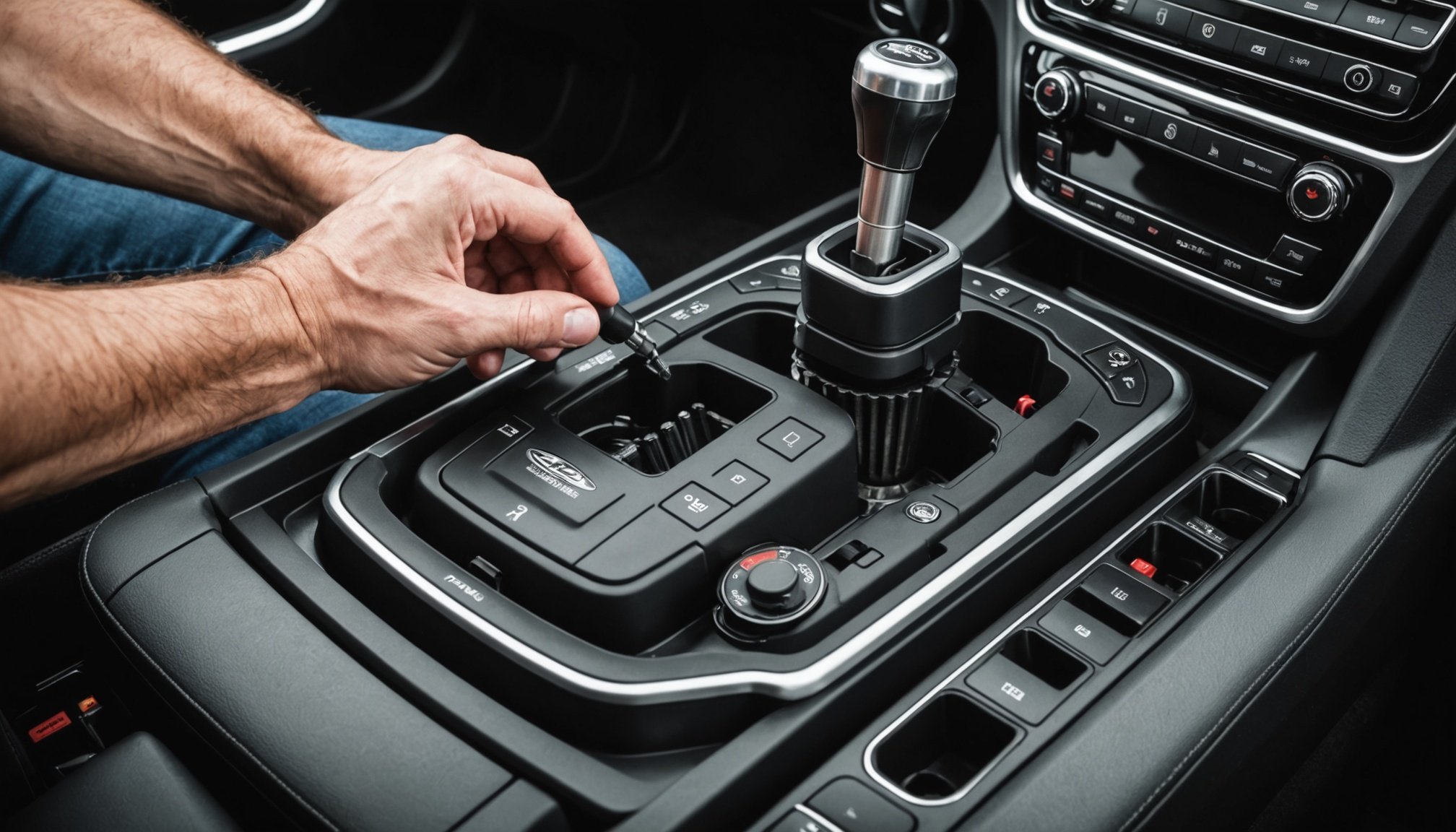Routine Maintenance for Optimal Transmission Performance
Ensuring proper transmission maintenance is crucial for maintaining both vehicle safety and performance. Regular fluid checks and changes are essential components of this maintenance. Transmission fluid lubricates moving parts, reducing wear and preventing overheating. Over time, fluid can degrade, leading to inefficient performance and potential damage, putting your transmission efficiency at risk.
It’s important to be aware of indicators that suggest maintenance is necessary. These include unusual noises, delayed gear shifts, or a burning smell. Addressing these signs promptly can prevent more serious issues. Furthermore, transmission filters play a significant role in maintaining cleanliness and preventing debris from contaminating the fluid. While specific replacement intervals vary by vehicle, replacing the filter every 30,000 miles is a commonly recommended practice.
In parallel : Ensuring vehicle safety: why regular drive belt maintenance is crucial for your car
A well-maintained transmission not only ensures vehicle performance but also enhances automatic transmission safety. Safeguarding these systems impacts stability and control, proving critical in avoiding accidents. Appropriately maintaining your vehicle’s transmission systems can keep problems at bay and ensure driving safety. Regular attention and timely intervention are the keys to sustained safety and efficiency. Properly managed, your vehicle remains a reliable and safe mode of transport.
Importance of Automatic Transmission Performance for Vehicle Safety
Automatic transmission plays a pivotal role in maintaining both vehicle performance and safety. A key component, transmission efficiency, directly influences your car’s stability and control, significantly impacting its safety profile. When transmission systems function optimally, gear changes are smooth and predictable, lending to a much safer driving experience.
In the same genre : Optimal Tire Pressure for Sports Cars Tackling Wet UK Roads: Expert Guidance
Driving stability is intricately linked to how well your automatic transmission performs. For instance, if a transmission fails or lags, gear shifts may become erratic. This can lead to sudden jerks or unpredictable speed changes, which compromise control, especially during critical maneuvers. Moreover, a well-maintained transmission boosts driver confidence, exponentially enhancing automatic transmission safety on the roads.
Statistics indicate a notable link between transmission issues and vehicular accidents. Poor transmission performance can result in decreased control, raising the likelihood of collisions, and transforming a minor mechanical issue into a significant safety hazard. Routine checks and maintaining optimal transmission efficiency help avoid these risks, ensuring safety is not inadvertently compromised. Addressing potential problems before they escalate is crucial in maintaining a reliable and secure driving environment.
Understanding the importance of automatic transmission in overall vehicle safety emphasizes the need for continued vigilance and conscientious maintenance efforts.
Troubleshooting Common Automatic Transmission Issues
Understanding and troubleshooting common issues with automatic transmissions is imperative for maintaining a vehicle’s safety and performance. Awareness of issues like transmission slippage, delayed engagement, and overheating can provide early warning signs, allowing for timely interventions.
Identifying Transmission Slippage
Transmission slippage occurs when the engine speed increases without a corresponding increase in speed, impacting safety by reducing acceleration control. Symptoms include sluggish response during acceleration and unusual engine revving. If identified, addressing slippage involves checking and refilling transmission fluid or assessing mechanical linkages.
Recognizing Delayed Engagement
Delayed engagement is observed when there’s a lag between shifting gears and the vehicle moving, often caused by old transmission fluid or worn parts. This can lead to potential risks such as decreased control during driving. Diagnostics involve fluid inspection and ensuring proper fluid levels.
Addressing Overheating Problems
When a transmission overheats, its performance can degrade, posing safety risks through impaired gear functioning. Overheating symptoms include a burnt odour and erratic gear shifts. Addressing overheating involves checking fluid levels, as insufficient fluid can lead to heat build-up. Ensuring the cooling system is functioning properly can also prevent overheating and protect the vehicle’s overall health.
Performance-Enhancing Practices for Automatic Transmissions
Enhancing automatic transmission performance involves understanding how driving habits and upgrades can extend lifespan and improve efficiency. Key practices include maintaining steady speeds and avoiding abrupt gear shifts. These habits minimise strain on the transmission system, preserving vehicle performance.
Performance upgrades can significantly boost transmission efficiency. Options like installing a transmission cooler help manage heat, while high-quality synthetic fluids reduce internal friction. Furthermore, tuning software allows for precise gear shift adjustments, catering to individual driving preferences while conserving automatic transmission safety.
Transmission upgrades can improve performance but should be approached with mindful consideration. For instance, consult with specialists before altering your vehicle’s software or hardware components. Improper changes might lead to unexpected operational issues rather than enhancements.
Exploring software adjustments offers another dimension of performance tuning. Calibrating the transmission control module (TCM) can result in smoother gear transitions, optimising fuel use and improving driving responsiveness. These adjustments are ideal for those seeking performance gains without physical modifications.
By employing these practices and upgrades, you’re ensuring a balance between desired performance enhancements and the preservation of vehicle safety. Regular consultation with transmission experts and adherence to professional recommendations help maintain optimal automatic transmission function and longevity.
Key Safety Strategies Linked to Transmission Performance
Understanding the link between transmission performance and overall vehicle safety is paramount. A well-optimised transmission ensures precise control during emergency maneuvers, reducing the risk of accidents. Enhanced transmission efficiency facilitates smoother handling, directly impacting driving stability and control.
Effective safety strategies include regular monitoring of transmission performance. Maintaining optimal automatic transmission safety requires vigilance and awareness of potential issues. Recognizing unusual noises or delays can prevent malfunctions, thus protecting the driver and passengers from potential hazards.
Practising safe driving habits significantly enhances the vehicle’s safety profile. Consistently checking transmission fluid levels and timely maintenance reduces the occurrence of erratic gear shifts, which can jeopardize vehicle stability. Such practices ensure a smoother and more predictable driving experience, contributing positively to a safe driving environment.
In support of these strategies, investing in quality transmission resources is highly recommended. Professional diagnostic services and expert advice can identify issues before they escalate, ensuring safe operation. Additionally, engaging with community forums and consulting local mechanics provides valuable insights and enhances driver confidence. By implementing these strategies, drivers can ensure both enhanced transmission performance and increased security on the road.
Resources for Further Learning and Support
Exploring transmission resources is vital for owners keen on enhancing their understanding of vehicle maintenance and performance. Access to comprehensive maintenance guides and educational materials can significantly empower vehicle owners. These resources often cover a spectrum of topics, from basic maintenance to more complex troubleshooting.
The value of professional assistance cannot be overstated. Engaging with certified mechanics ensures accurate diagnosis and solution to transmission issues. They bring expertise rooted in experience and training, facilitating reliable maintenance or repair work, often catching potential problems early on.
Online community forums offer an exceptional platform for exchanging ideas, experiences, and advice. These digital hubs connect enthusiasts and experts, creating an environment for learning and problem-solving. For those seeking immediate insights, local mechanics provide face-to-face interactions, which can be invaluable, especially when dealing with complex issues.
Consider these diverse resources—each adds a layer of support and insight, ensuring you stay informed about transmission maintenance. Regular consultation and engagement with these platforms and professionals cultivate a proactive approach to vehicle care, saving costs and enhancing overall safety. Expanding your knowledge base ultimately supports both your transmission’s health and your own confidence as a vehicle owner.











